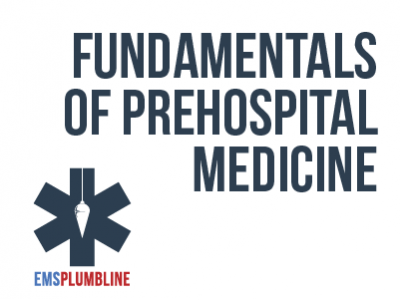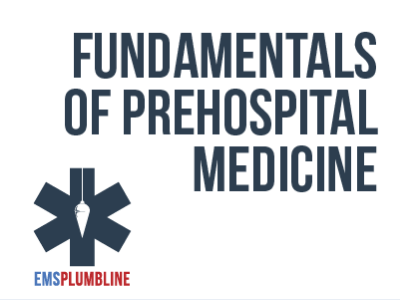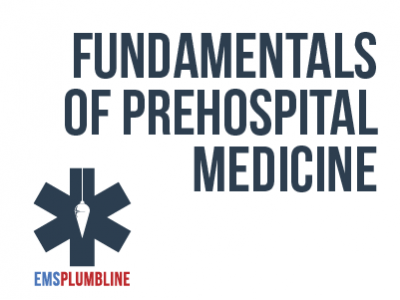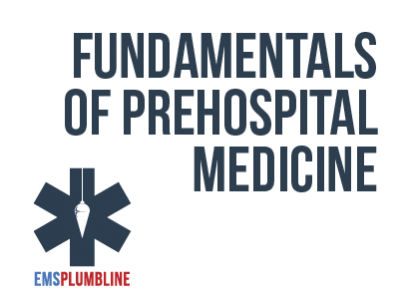 |
Building Relationships with Students for Paraprofessionals |
1.00 |
For students to learn effectively in school, research shows that they need to have positive relationships with school staff. There are specific characteristics and attributes that paraprofessionals need to build and foster these positive relationships with students. A classroom that fosters positive relationships between students and school staff is critical to developing an effective learning environment. |
 |
Building Upward: BLS Diabetes Discussions |
2.00 |
We captured an engaging discussion between a retired ALS provider and a system medical director. Michelle Cerone and Dr. Jeremy Cushman spoke about the topic of diabetes. Refreshing BLS providers can use the information from the discussion and the scenarios that were built following its conclusion to meet minimum competencies and more.
Final Exam: This multiple-choice exam is designed to test your knowledge of the material you just reviewed. You have two attempts to gain an 75% or higher on this exam. Please take your time and answer each question carefully. |
 |
Building Upward: BLS Pharmacology Lesson 1—Albuterol |
1.50 |
The Building Upward Series is designed for the EMT who would like to review their basic skills and learn a little more than what was offered in the standard original course. If you are an EMT who is looking for a challenge and would like to know what questions to ask, this series is for you. Most BLS providers find the world of pharmacology to be one of the more confusing topics in prehospital medicine. This is the first lesson in a series that gives the BLS provider an opportunity to relate some advanced concepts to their practice as BLS providers. We begin with the commonly used medication albuterol sulfate and discuss many fundamental concepts that every provider should know when administering medications in a prehospital setting. Final Exam: This multiple choice exam is designed to test your knowledge of the material you just reviewed. You have two attempts to gain a 75% or higher on this exam. Please take your time and answer each question carefully. |
 |
Building Upward: Pulse Oximetry for BLS Providers |
1.00 |
Pulse oximetry is a tool that can give a medic a great deal of insight into the patient's condition. Paramedic Instructor Peter Bonadonna does a fantastic job of illustrating the fundamental issues that surround pulse oximetry readings and how they should be interpreted. Final Exam: This multiple-choice exam is designed to test your knowledge of the material you just reviewed. You have two attempts to gain an 80% or higher on this exam. Please take your time and answer each question carefully. |
 |
Building Upward: Resuscitation of Anaphylactic Shock Part 1—Overview |
1.00 |
Retired ALS provider, Michelle Cerone, speaks with Dr. Jeremy Cushman about the recognition and treatment of anaphylactic shock. This discussion gives the BLS provider the opportunity to compare allergic reactions to the life-threatening condition that requires rapid intervention. Final Exam: Please read each question carefully. You will have two attempts to gain a 70% or higher on this exam. If you are not successful in two attempts, you are welcome to take the course again to gain the certification. |
 |
Building Upward: Resuscitation of Anaphylactic Shock Part 2—Scenario 1 |
1.00 |
The second part of this series is the first of three scenarios. All three scenarios are designed to review complicated situations that BLS providers may be asked to navigate. This scenario has us consider the care of an anaphylactic patient in the setting of a pregnancy. Paramedic student Vanessa Petote does an excellent job of interviewing Dr. Jeremy Cushman. Final Exam: Please read each question carefully. You will have two attempts to gain a 70% or higher on this exam. If you are not successful in two attempts, you are welcome to take the course again to gain the certification. |
 |
Building Upward: Resuscitation of Anaphylactic Shock Part 3—Scenario 2 |
1.00 |
In this second of three scenarios, we discuss the transport decisions that should be considered when dealing with the potential of a medical illness and a traumatic injury. Vanessa and Medical Director Dr. Jeremy Cushman discuss a patient who has a motorcycle accident that was caused by a beesting. This exciting discussion will effectuate a review of the minimum competencies of medical and trauma care at the EMT level. Final Exam: Please read each question carefully. You will have two attempts to gain a 70% or higher on this exam. If you are not successful in two attempts, you are welcome to take the course again to gain the certification. |
 |
Building Upward: Resuscitation of Anaphylactic Shock Part 4—Scenario 3 |
1.00 |
This scenario involves a patient with special needs who has developed angioedema. Paramedic student Vanessa Petote and Medical Director Dr. Jeremy Cushman speak about the care that a special needs patient must receive, as well as the specific challenges that accompany a patient with a potentially unstable airway. Final Exam: Please read each question carefully. You will have two attempts to gain a 70% or higher on this exam. If you are not successful in two attempts, you are welcome to take the course again to gain the certification. |
 |
Building Upward—Primary Assessment |
1.00 |
Course Description: It is often said that experience is the best teacher. Dr. Jack Davidoff is an experienced EMS Medical Director. Paramedic Jason Haag is an experienced fire and EMS provider. The two of them share a few thoughts that prove to be an excellent review of what should and could be done during a standard primary assessment and more. Final Exam: A score of 80% or higher is required to obtain your certificate. You have two attempts to pass this multiple-choice exam. Please take your time to carefully answer each question. |
 |
Business Accounting: Accounting for Assets |
1.00 |
This course will cover how to identify asset types and use the accounting equation and how to define current assets and identify related accounting methods. You will also learn how to define noncurrent assets and identify related accounting methods. |
 |
Business Accounting: Accounting for Inventory |
1.00 |
The term inventory refers to the assets that a company holds for resale in the normal course of business. It is important to distinguish between the types of inventory costs incurred and how the inventory costs are calculated. |
 |
Business Accounting: Accounting for Inventory (Corrections) |
0.75 |
The term inventory refers to the assets that a company holds for resale in the normal course of business. It is important to distinguish between the types of inventory costs incurred and how the inventory costs are calculated. |
 |
Business Accounting: Accounting for Liabilities |
0.75 |
This course will cover how to define and account for the various types of current liabilities. You will also learn how to define and account for the various types of long-term liabilities. |
 |
Business Accounting: Accounting System |
0.50 |
This course will cover how to define accounting terms and identify the institutions that establish accounting principles for businesses. You will also learn how to relate the accounting system to various business activities. |
 |
Business Accounting: Stockholders' Equity |
1.50 |
This course will cover how to identify various types of stocks and calculate the value of a corporation’s stock as well as how to use financial ratios to calculate book value and market value per share. You will also learn how to identify the components of stockholders’ equity and report stockholders’ equity on financial statements. |
 |
Business Accounting: Time Value of Money |
1.00 |
This course will cover how to calculate the present and future values of a cash flow as well as how to calculate the interest rate and the maturity date of a security by using the time value of money equation. You will also learn how to calculate the present and future values of ordinary annuity and annuity due and the present and future values of bonds. |
 |
Business Communication |
1.00 |
Business communication is best described as the process of sharing information for the benefit of a business. It's generally categorized as being either internal or external. Internal communication, as the name suggests, is when a business shares information within its organization. External communication is when a business shares information outside of its organization, either to clients, customers or vendors.
In this course, you'll learn about the influence of body language, the essentials of business writing, and more, as they relate to communicating in the business world. |
 |
Business Ethics: Ethical Decisions |
1.67 |
In this course you will learn to: define business ethics, describe how to balance personal values and organizational ethics, and identify common ethical dilemmas and their causes, and describe the DECISIONS method of making ethical decisions and identify the barriers to making such decisions. |
 |
Business Ethics: Ethical Decisions (Instructor Guide) |
1.67 |
In this course you will learn to: define business ethics, describe how to balance personal values and organizational ethics, and identify common ethical dilemmas and their causes, and describe the DECISIONS method of making ethical decisions and identify the barriers to making such decisions. |
 |
Business Ethics: Managerial Ethics |
1.34 |
In this course you will learn to: identify the characteristics of ethical managers, different ethical styles, and the important ethical components of various human resource issues, and ensure ethical behavior in the workplace and address the ethical dilemmas of subordinates. |
 |
Business Ethics: Managerial Ethics (Instructor Guide) |
1.34 |
In this course you will learn to: identify the characteristics of ethical managers, different ethical styles, and the important ethical components of various human resource issues, and ensure ethical behavior in the workplace and address the ethical dilemmas of subordinates. |
 |
Business Ethics: Organizational Ethics |
1.50 |
In this course you will learn to: identify the need for organizational ethics and the types of ethical issues that arise in various functional areas, promote and maintain ethical principles in business, develop a corporate code of ethics and execute an internal audit, identify types of corporate social responsibilities and handle conflicts in responsibilities when they arise. |
 |
Business Ethics: Organizational Ethics (Instructor Guide) |
1.50 |
In this course you will learn to: identify the need for organizational ethics and the types of ethical issues that arise in various functional areas, promote and maintain ethical principles in business, develop a corporate code of ethics and execute an internal audit, identify types of corporate social responsibilities and handle conflicts in responsibilities when they arise. |
 |
Business Ethics: Unethical Behavior |
1.00 |
In this course you will learn to: recognize the sources of unethical behavior, and take action to prevent it, and end unethical behavior by conducting an intervention meeting, and promote ethical behavior in the workplace. |
 |
Business Ethics: Unethical Behavior (Instructor Guide) |
1.00 |
In this course you will learn to: recognize the sources of unethical behavior, and take action to prevent it, and end unethical behavior by conducting an intervention meeting, and promote ethical behavior in the workplace. |


























